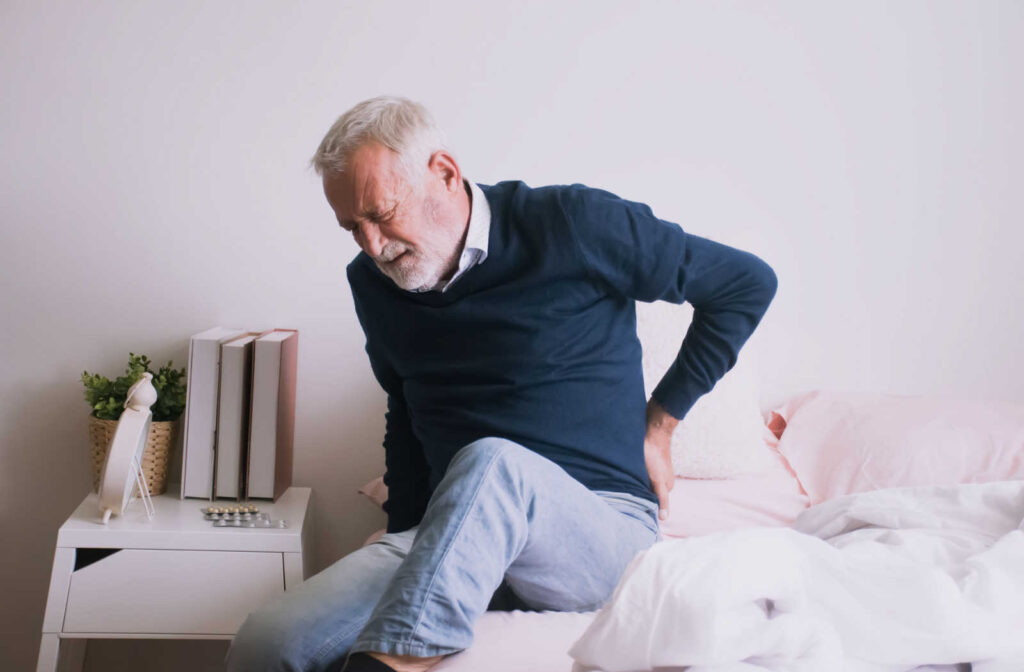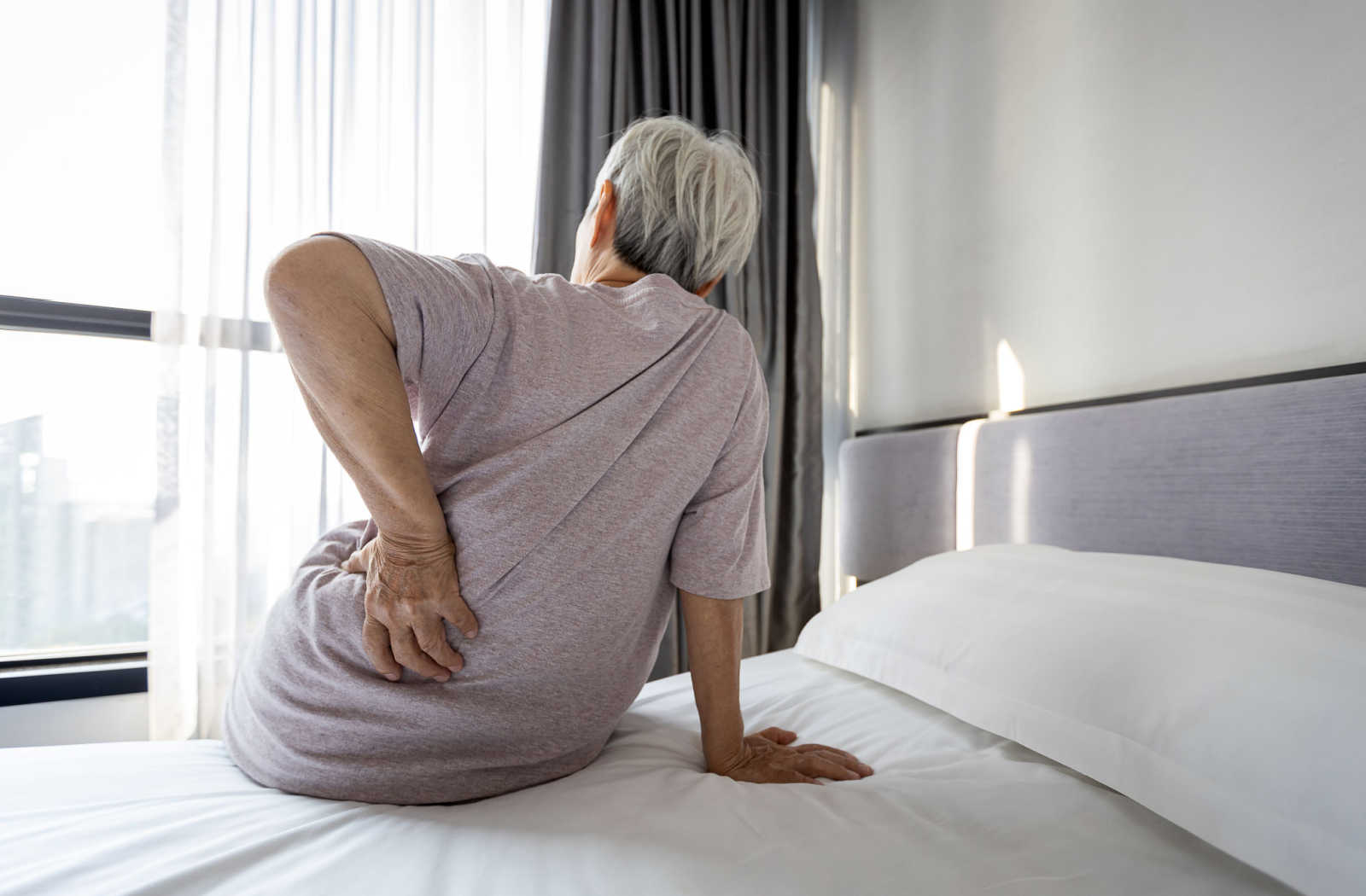Why Does My Hip Replacement Hurt?
Whether you’ve recently gotten an implant or got one a long time ago that’s now giving you trouble, there’s no need to panic. Our bodies can experience pain for a lot of reasons, but the good news is there are plenty of remedies to help you. Whether you are recovering at home or enjoying an extended stay with us at All American Assisted Living at Wareham for Respite Care, it’s good to be aware of the signs of potential concern.
What is Hip Replacement Surgery?
Hip replacement surgery (total hip arthroplasty) involves removing damaged bone and cartilage and replacing it with prosthetics.
Hip replacements alleviate stiffness and pain caused by injury, arthritis, or other conditions. When medications, walking supports, and physical therapy fail to address symptoms, a hip replacement procedure is generally the next step. The goal of a hip replacement is to increase mobility and reduce pain. Prosthetics are designed to last 15 to 20 years on average.
What is a “Normal” Amount of Pain?
Experiencing some pain following your hip replacement is normal. You may notice some swelling and tenderness around the joint. Try reducing the pain by:
- Properly resting between physical therapy sessions
- Icing your leg and incision site
- Taking anti-inflammatory medications (with physician approval)
- Elevating your leg above your heart
Pay attention to your pain levels. Your pain should decrease over your recovery time (typically 12 weeks). After 6 months, the majority of patients are able to walk without a limp and without hip pain.
If you are consistently a 6 or above on the 1-10 pain scale, consult your doctor. This could be an indication that something more serious is going on.
Signs & Symptoms to Watch For
“I had pain immediately after surgery that never got better.”
If your pain never resolved after your hip replacement, there may be a small fracture around the implant. It could also indicate inflammation of the tendons around your hip.
You may notice that your hip doesn’t hurt during most activities, but you feel pain when laying on your side. This could be a sign of trochanteric bursitis or tendonitis. These conditions are more common shortly after a hip replacement while the joint is healing.
Tendonitis and bursitis can usually be resolved with pain medication, physical therapy, anti-inflammatories, or cortisone injections. Your physician will evaluate the best option for you.
The most important thing to remember is that your pain should subside over time. If your pain isn’t getting better, consult with your doctor as soon as possible.
“My pain went away for a while and then came back.”
If your hip was pain-free following surgery, but you later developed pain around your groin or thigh, you may need follow-up testing. Additional tests can help identify the cause of your pain.
Blood tests and advanced imaging may be necessary if the more obvious sources of pain, such as trauma or medical conditions, are ruled out. If you’re experiencing returning pain, the best course of action is to discuss it with your doctor.
“There is pain in my groin when standing up, but not when I’m resting.”
Pain around your groin during regular movement could indicate a loose cup component in your implant. This can be identified with bone scans and advanced imaging.
“There is pain in my thigh when standing/moving, but not when I’m resting.”
Pain around your thigh with daily activities could indicate a loose femoral component. This can also be identified with bone scans and advanced imaging.
“There is constant pain and weakness in my groin/thigh while I’m resting, especially at night.”
Constant pain around your implant along with flu-like symptoms could indicate an infection or reaction to your implant. If you’re experiencing these symptoms, contact your physician immediately.
Remember: infections can occur at any time.
“I have pain, but not quite like anything mentioned above.”
Pain radiating from your lower back down to your knee could be a sign of arthritis or sciatica in your back presenting as pain in your hip. You may require medication or more physical therapy.
Pain radiating through your groin, thigh, or buttock could be a sign of subtle muscle tears or tendonitis. Fortunately, these conditions can usually be resolved quite easily with proper exercise or medication.
Sometimes patients experience pain as a result of stress fractures, muscle tears, or other conditions like pinched nerves. Usually, x-rays and physical exams can help identify the cause of your pain. Your best course of action is to discuss any changes in your recovery with your primary doctor.

Warning Signs of a Failing Implant
If you experience any of the following issues, contact your doctor right away.
Loosening/Instability
Hip implants are anchored into your bone. Eventually, your bone should attach to the prosthesis. However, if this doesn’t happen, the joint will likely feel painful or unstable.
The loosening of your implant can be exacerbated by excess weight, high-impact activities, or general wear and tear. Common symptoms associated with a loosening hip joint include:
- Chronic pain
- Popping or clicking sound
- Feeling your joint “give out” under weight
- Partial or full dislocation
- Swelling around the joint
Infection
Infection is one of the most serious, but less common, complications of a hip replacement. It can occur in the wound or around the prosthesis. Superficial infections can usually be treated with antibiotics, while deep infections may require additional surgery.
Infections can occur years after your initial surgery because any infection in the body can spread to the joint. Symptoms of infection include:
- Pain
- Redness/swelling
- Instability
- Drainage
- Wounds that don’t heal
Other possible symptoms of infection include:
- Fever
- Severe muscle aches
- Nausea/vomiting
- Diarrhea
- Major fatigue
If you experience these symptoms, seek immediate medical care.
Frequent/Recurring Dislocations
A hip implant dislocation occurs when the ball of the joint pops out of the socket. Dislocations can happen in the first few months after surgery as your tissues heal or as a result of injury. Still, you shouldn’t experience ongoing dislocations. Recurring dislocations are a sign that something is not quite right, and you may need revision surgery. Symptoms include:
- Severe pain in/around the hip or groin area
- Inability to walk
- Weakness or inability to move your leg
- One leg is noticeably shorter than the other
Fracture
Taking a fall or direct hit to your hips can cause a fracture. Fracturing the surrounding bones can damage or loosen your implant. If you have recently experienced trauma to your hips, contact your doctor.
Metal Allergy
Metal allergies and reactions can occur in any patient that receives a prosthesis.
Hip replacements performed prior to May 2016 may have used entirely metal prosthetics—both the ball and socket components are metal. These pieces rub together during day-to-day activities and can release microscopic metal particles into the body, sometimes causing allergic reactions and sensitivities in patients.
Metal-on-metal implants are no longer offered, but you may require revision surgery if your prosthesis is fully metal. Metal allergies can be difficult to diagnose, but symptoms to look for include:
- Significant swelling
- Joint pain/stiffness
- Skin discoloration
- Rash/itching around joint
Proper Recovery & Rehabilitation
The average recovery time for a hip replacement is 6 months, after such time the patient should be able to walk without pain or a limp.
You should be able to return to your regular day-to-day activities slowly, but it’s best to practice extra caution and care for the first 4 to 6 weeks. You may need some assistance with chores and care around your home, so have a close friend or family member nearby to support you during recovery.
Every patient is unique, so your recovery time may vary. As long as you follow your doctor’s recovery and rehabilitation plan, as well as stick to your follow-up appointment schedule, your hip should heal properly.
What to Avoid
Your doctor and physical therapist will discuss what to do and what not to do during your recovery period. Some absolute “don’ts” during your recovery include:
- Don’t cross your legs for approximately 6 to 8 weeks
- Don’t raise your knee higher than your hip
- Don’t lean forward while sitting
- Don’t try to pick something up off the floor while sitting
- Don’t turn your feet in/out when bending
- Don’t reach to pull up blankets when lying down
- Don’t bend at the waist beyond 90 degrees
Follow-Up Appointments
Your doctor will discuss a proper follow-up schedule for you. It’s recommended that patients follow up every 4 to 6 weeks for the first 6 months after their surgery. Unless you notice any changes in your pain or mobility, annual follow-ups are often all you’ll need.
Improving Mobility & Pain Management
Improving your mobility after your hip replacement depends on your commitment to your physical therapy and optimal living. Optimal living solutions may be a great choice if you need an easy, safe way to go through recovery and could benefit from additional care.
Learn more about optimal living options here.
Completing your exercises regularly will help you regain strength and manage pain after surgery. You can walk as much as you’d like, as well as participate in low-impact activities. These activities include swimming, biking, doubles tennis, and golf. A proper diet can also help your recovery and reduce your pain.
Getting Help
If you have any concerns or questions about your hip replacement, consult your doctor directly to get the best treatment for you.





